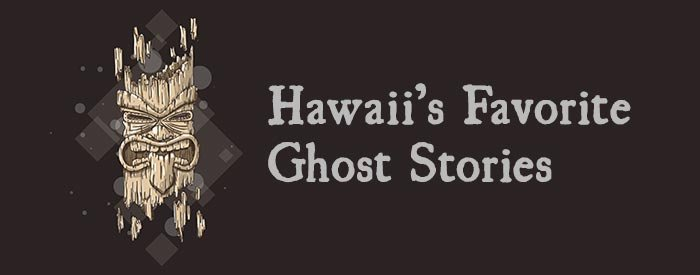Ka Huakaʻi o Ka Pō - The Night Marchers
- useduforce

- Apr 5, 2022
- 4 min read
The following information details the standard apparitions - the beliefs and accounts surrounding this mystery may vary from island to island, even town to town.
To get some background information on ancient Hawaiian ghosts in general ("Nā Lapu"), read this blog post!

Every so often, after darkness has approached the islands of Hawaiʻi, a long procession of the dead will rise to walk upon the Earth they had once trod. In the form of ghosts, these poʻe kahiko ("people of old"), either the average ʻaumakua, lapu of aliʻi (chiefs), or akua (gods), surge to march for one of several possible reasons: 1) To enjoy the places they had once favored in life; 2) To search for the Land of Milu (the underworld); or 3) To take a living soul that's ready to move on into this next life. This parade of ghosts are referred to as the "Night Marchers" - in Hawaiian: "Ka Huakaʻi o Ka Pō" or simply "Huakaʻi Pō." The term " ʻoiʻo," which means "Procession," is also used.
Some Hawaiians today have maps of the routes the Huakaʻi Pō often take in their area, some of which even go through and haunt homes and roads, and can lead to old heiau (pre-Christian temples)! These terrors appear on all the Hawaiian Islands, Oʻahu and Hawaiʻi being the ones most commonly heard about.

These parades are frequently accompanied by an eerie, silver mist, ominously lit torches (most brightly shone for akua-lead Huakaʻi), and by loud sounds. These sounds can be the heavy pounding of their marching feet, their beating drums, or even ancient Hawaiian music and chants - all depending on the preference held by the leader in life. The ghosts themselves, although they march, don't have feet and merely float along the ground. The aliʻi and akua (usually carried on a litter) are surrounded by dead warriors to protect them, though ʻaumākua are present as well.
For the living to encounter the ʻoiʻo is usually detrimental and fatal. If one stumbles upon a procession, he should immediately get out of sight or lie still, naked on the ground with eyes shut. The humiliation might bring the leader to let the onlooker pass...but it might not. The best hope the unwelcomed visitor has is to have an ʻaumakua or ancestor already be in the procession to beg for his descendant's life. Because of this danger, if there is a sudden death in the area, Hawaiians often attribute it to the Night Marchers.

The ʻoiʻo, which is made up of various lapu, is often confused with the stray lapu that mindlessly wander the land with no purpose (like the ones that harrassed Kaululāʻau). The Marchers are said to appear on the nights dedicated to a god (Kāne, Lono, Akua, or Ku - determined by the phase of the moon) as well as on the nights of Kaloa. They only show during the night, between 7pm and 2am (after the sun has set and before the sun rises again).
The earliest stories told about the Huakaʻi Pō are recorded after Captain Cook's arrival in 1778, which means that it's possible that these processions did not occur pre-contact. Many early stories are relayed in the early 20th century (1930s/1940s), but there have been copious encounters revealed since then, including in the 21st century!
Hawaiians are not the only ones to have seen or heard these ʻoiʻo, nor are they the only ones that comprise the lapu in the ʻoiʻo. There is a report of a formation of the ghosts of Chinese men arising from the graves of past sugar plantation workers who were early immigrants of the 1800s. It is also not unheard of for a tourist to accidentally come across the Huakaʻi Pō.
Ka Moʻolelo o Ka Make o Lili'uokalani
Below is my Hawaiian adaption of a particularly chilling story!
~
I kekahi lā, ma ke kūlanakauhale ʻo Kaʻu ma ka Mokupuni o Hawaiʻi, ua ʻike hoʻokahi kāne Pākē i pūʻulu nui o lapu. He ʻoiʻo ʻano ʻē kēlā. Ua hele aku ʻo ia e ʻōlelo me kekahi kahu Hawaiʻi - ʻae ke kahu me ka Pākē: he ka Huakaʻi o ka Pō kēlā.
I kēia lā aʻe, ʻo ka lā ʻumikūmākahi o Nowemapa ma ka makahiki ʻumikūmāiwa ʻumikūmāhiku (1917), ua make ka mōʻī wahine ʻo Liliʻuokalani. Ua lawe aku nā lapu o kēlā Huakaʻi Pō i kona hiamoe.
Pīpī holo kaʻao!
*There's also an episode ("Belle" ~14:37 minutes) in the Lilo & Stitch TV series whose plot pertains to the Night Marchers! To make it child-friendly, the show has the victim turn to stone instead of dying.*
Hua ʻōlelo:
- Ka Huakaʻi o Ka Pō / Huakaʻi Pō = The Trip of the Night / Night Trip
- ʻoiʻo = Procession
- Poʻe kahiko = People of old (Ancient Hawaiians)
- Aliʻi = Chief
- Akua = God
- Heiau = Temple (pre-Christian)
SOURCES:
[1] (1865) Ka Nūpepa Kuokoa. March 2, 1865; Ancient Worship. Number 9. [S. N. HOLOKAHIKI]
→ English translation (p. 77-78; PDF p. 11-12): https://core.ac.uk/download/pdf/5014451.pdf
[2] (1903) Hawaiian Antiquities; David Malo
→ (p. 152, 154 Note 4) https://archive.org/details/hawaiianantiquit00malouoft/page/152/mode/2up
[3] (1915) Legends of Gods and Ghosts by William Drake Westervelt ["HOMELESS AND DESOLATE GHOSTS"]
→ Google Book (p. 246; PDF p. 232): https://play.google.com/books/reader?id=qqETAAAAYAAJ&pg=GBS.PA244&hl=en
[4] (1930) The Marchers of the Night; Mary Wiggin Pukui
→ (p. 198; PDF p. 204): https://babel.hathitrust.org/cgi/pt?id=mdp.39015008836432&view=1up&seq=204&skin=2021
[5] (1970) Hawaiian Mythology by Martha Beckwith
→ (p. 164) [Book]
[6] (1983) PHANTOM NIGHT MARCHERS IN THE HAWAIIAN ISLANDS; Katharine Luomala
[7] (1996) Obake Files: Ghostly Encounters in Supernatural Hawaiʻi; Glen Grant
→ (p. 79) [Book]


Comments